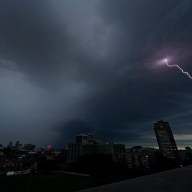Q. What type of waste are fluorescent lamps and bulbs and how do I dispose of them?
A. Universal waste is a category that describes waste present in a wide number of locations and quantities that are located in non-hazardous waste systems. This waste includes hazardous waste elements in them but not enough to trigger inclusion under higher risk hazardous waste legislation. Typical items classified as universal waste include batteries, thermostats, some pesticides, and mercury vapour lamps (including fluorescent lamps and bulbs).
The benefit of fluorescent technology has been proven through energy savings. For example, a 13-watt CFL can provide the same light level as a 60-watt incandescent bulb. Fluorescent bulbs and lamps have small amounts of mercury in them that is charged inside the tube to create light. The U.S. Envinvironmental Protection Agency suggests a 25-watt CFL contains approximately five mg per unit of mercury (tip of a ballpoint pen) compared to about 500 to 3,000 mg in a mercury thermometer. This mercury amount is less than what would be emitted from mercury-emitted from power plants through the reductions in energy.
Though it is a small amount of mercury per bulb, the amount entering our waste stream will continue to increase. Emerging technology such as LEDs does not contain mercury.
In the U.S., the Environmental Protection Agency has set national recycling targets and some states are enacting legislation and industry stewardship programs. Recycling technology can capture the mercury and use the other glass and metals in new materials.
In 2005, Pollution Probe released a study on increasing the recycling of lamps in Canada. A number of options are proposed including education programs, disposal bans, and extended producer responsibility.
Currently, there is no requirement to recycle fluorescent lamps and bulbs and there are only a few options. If you are a larger organization you may consider an onsite “bulb-crushing” unit that crushes lamps and tubes. Mercury is captured in a filter and then is handled through hazardous waste streams.
Some companies are starting to offer commercial recycling services where lamps are shipped to an offsite recycling center. As a householder, a few companies like Home Depot have bins for collecting CFLs for recycling.
To improve recycling rates in Nova Scotia options such as passing a disposal ban and working with industry to establish an industry stewardship program similar to electronics should be seriously considered.
– Rochelle Owen is director of sustainability at Dalhousie University. She has worked in the environment and sustainability field for 19 years; rochelle.owen@gmail.com.













